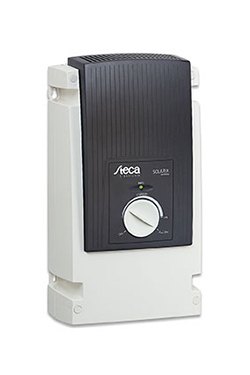
Electrical consumers use either DC (direct current), or AC (alternating current). Conventional domestic appliances in Europe are based on 230 VAC and in America mainly on 110 VAC, since this is the power that comes right from the socket.
Solar systems, however, produce 5 VDC, 12 VDC or 24 VDC direct current. Appropriately, many electrical devices are available in a correspondingly energy saving design. Phaesun has a wide range of products for interior and exterior lighting, fans, TV sets and freezers/fridges on a 12 VDC or 24 VDC basis available.
If you wish to connect conventional domestic appliances based on 230 VAC or 110 VAC in addition, you need an inverter to do so. An inverter enables you to operate any device from the electrical toothbrush through to your sound system or vacuum cleaner.
The appropriate inverter for your application!
Phaesun offers you exclusively high-quality pure sinewave inverters to guarantee a reliable power supply as easy as directly from the socket. The required inverter size depends on the capacity of the loads that must be served. If you want to operate mainly TV or video sets and charging devices for mobile phones or laptops, a 300 W inverter is sufficient.
Larger inverters are required if devices with higher capacities, such as hair dryers, vacuum cleaners, or microwaves are used. You should always take the size of the batteries into account when you are planning which electrical devices you wish to operate. The batteries are mostly a limiting factor here. The higher the battery capacity, the longer the potential operation time of the electrical consumers.
Energy saving loads such as LED lamps and TV sets are far less stressful for the battery than just a short hair drying with a hair blower. The rule of the thumb is: Smaller inverters with up to 300 W should be connected with a battery of at least 100 Ah, larger inverters with 1000/1500 W should go with a battery capacity of at least double this value.
